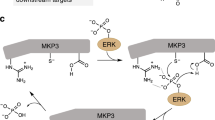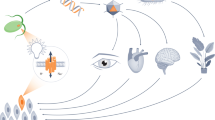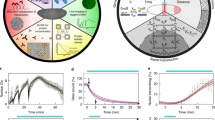Abstract
Developmental biology has been continually shaped by technological advances, evolving from a descriptive science into one immersed in molecular and cellular mechanisms. Most recently, genome sequencing and 'omics' profiling have provided developmental biologists with a wealth of genetic and biochemical information; however, fully translating this knowledge into functional understanding will require new experimental capabilities. Photoactivatable probes have emerged as particularly valuable tools for investigating developmental mechanisms, as they can enable rapid, specific manipulations of DNA, RNA, proteins, and cells with spatiotemporal precision. In this Perspective, we describe optochemical and optogenetic systems that have been applied in multicellular organisms, insights gained through the use of these probes, and their current limitations. We also suggest how chemical biologists can expand the reach of photoactivatable technologies and bring new depth to our understanding of organismal development.
This is a preview of subscription content, access via your institution
Access options
Access Nature and 54 other Nature Portfolio journals
Get Nature+, our best-value online-access subscription
$29.99 / 30 days
cancel any time
Subscribe to this journal
Receive 12 print issues and online access
$259.00 per year
only $21.58 per issue
Buy this article
- Purchase on Springer Link
- Instant access to full article PDF
Prices may be subject to local taxes which are calculated during checkout







Similar content being viewed by others
References
Palczewski, K. Chemistry and biology of vision. J. Biol. Chem. 287, 1612–1619 (2012).
Ernst, O.P. et al. Microbial and animal rhodopsins: structures, functions, and molecular mechanisms. Chem. Rev. 114, 126–163 (2014).
Lin, J.Y. A user's guide to channelrhodopsin variants: features, limitations and future developments. Exp. Physiol. 96, 19–25 (2011).
Wietek, J. & Prigge, M. Enhancing channelrhodopsins: an overview. Methods Mol. Biol. 1408, 141–165 (2016).
Nagano, S. From photon to signal in phytochromes: similarities and differences between prokaryotic and plant phytochromes. J. Plant Res. 129, 123–135 (2016).
Masuda, S. Light detection and signal transduction in the BLUF photoreceptors. Plant Cell Physiol. 54, 171–179 (2013).
Ahmad, M. Photocycle and signaling mechanisms of plant cryptochromes. Curr. Opin. Plant Biol. 33, 108–115 (2016).
Herrou, J. & Crosson, S. Function, structure and mechanism of bacterial photosensory LOV proteins. Nat. Rev. Microbiol. 9, 713–723 (2011).
Suetsugu, N. & Wada, M. Evolution of three LOV blue light receptor families in green plants and photosynthetic stramenopiles: phototropin, ZTL/FKF1/LKP2 and aureochrome. Plant Cell Physiol. 54, 8–23 (2013).
Harper, S.M., Neil, L.C. & Gardner, K.H. Structural basis of a phototropin light switch. Science 301, 1541–1544 (2003).
Bandara, H.M. & Burdette, S.C. Photoisomerization in different classes of azobenzene. Chem. Soc. Rev. 41, 1809–1825 (2012).
Fihey, A., Perrier, A., Browne, W.R. & Jacquemin, D. Multiphotochromic molecular systems. Chem. Soc. Rev. 44, 3719–3759 (2015).
Szymański, W., Beierle, J.M., Kistemaker, H.A., Velema, W.A. & Feringa, B.L. Reversible photocontrol of biological systems by the incorporation of molecular photoswitches. Chem. Rev. 113, 6114–6178 (2013).
Dong, M., Babalhavaeji, A., Samanta, S., Beharry, A.A. & Woolley, G.A. Red-shifting azobenzene photoswitches for in vivo use. Acc. Chem. Res. 48, 2662–2670 (2015).
Barltrop, J.A., Plant, P.J. & Schofield, P. Photosensitive protective groups. Chem. Commun. (London) 1966, 822–823 (1966).
Kaplan, J.H., Forbush, B. III & Hoffman, J.F. Rapid photolytic release of adenosine 5′-triphosphate from a protected analogue: utilization by the Na:K pump of human red blood cell ghosts. Biochemistry 17, 1929–1935 (1978).
Wilcox, M. et al. Synthesis of photolabile “precursors” of amino acid neurotransmitters. J. Org. Chem. 55, 1585–1589 (1990).
Corrie, J.E.T., Furuta, T., Givens, R., Yousef, A.L. & Goeldner, M. in Dynamic Studies in Biology (eds. Goeldner, M. & Givens, R.S.) 1–94 (Wiley–VCH Verlag GmbH & Co. KgaA, 2005).
Gorka, A.P., Nani, R.R., Zhu, J., Mackem, S. & Schnermann, M.J. A near-IR uncaging strategy based on cyanine photochemistry. J. Am. Chem. Soc. 136, 14153–14159 (2014).
Carling, C.J. et al. Efficient red light photo-uncaging of active molecules in water upon assembly into nanoparticles. Chem. Sci. 7, 2392–2398 (2016).
Krafft, G.A., Sutton, W.R. & Cummings, R.T. Photoactivable fluorophores. 3. Synthesis and photoactivation of fluorogenic difunctionalized fluoresceins. J. Am. Chem. Soc. 110, 301–303 (1988).
Gee, K.R., Weinberg, E.S. & Kozlowski, D.J. Caged Q-rhodamine dextran: a new photoactivated fluorescent tracer. Bioorg. Med. Chem. Lett. 11, 2181–2183 (2001).
Hatta, K., Tsujii, H. & Omura, T. Cell tracking using a photoconvertible fluorescent protein. Nat. Protoc. 1, 960–967 (2006).
Rodriguez, E.A. et al. The growing and glowing toolbox of fluorescent and photoactive proteins. Trends Biochem. Sci. 42, 111–129 (2017).
Kwan, K.M. et al. A complex choreography of cell movements shapes the vertebrate eye. Development 139, 359–372 (2012).
McKinney, M.C. et al. Evidence for dynamic rearrangements but lack of fate or position restrictions in premigratory avian trunk neural crest. Development 140, 820–830 (2013).
Huang, P., Xiong, F., Megason, S.G. & Schier, A.F. Attenuation of Notch and Hedgehog signaling is required for fate specification in the spinal cord. PLoS Genet. 8, e1002762 (2012).
Nirenberg, S. & Cepko, C. Targeted ablation of diverse cell classes in the nervous system in vivo. J. Neurosci. 13, 3238–3251 (1993).
Jewhurst, K., Levin, M. & McLaughlin, K.A. Optogenetic control of apoptosis in targeted tissues of Xenopus laevis embryos. J. Cell Death 7, 25–31 (2014).
Qi, Y.B., Garren, E.J., Shu, X., Tsien, R.Y. & Jin, Y. Photo-inducible cell ablation in Caenorhabditis elegans using the genetically encoded singlet oxygen generating protein miniSOG. Proc. Natl. Acad. Sci. USA 109, 7499–7504 (2012).
Xu, S. & Chisholm, A.D. Highly efficient optogenetic cell ablation in C. elegans using membrane-targeted miniSOG. Sci. Rep. 6, 21271 (2016).
Makhijani, K. et al. Precision optogenetic tool for selective single- and multiple-cell ablation in a live animal model system. Cell Chem. Biol. 24, 110–119 (2017). Optimization of miniSOG through directed evolution and its application in Drosophila embryos.
Sinha, D.K. et al. Photoactivation of the CreER T2 recombinase for conditional site-specific recombination with high spatiotemporal resolution. Zebrafish 7, 199–204 (2010). Application of caged 4-hydroxycyclofen to control Cre recombinase activity in zebrafish embryos.
Lu, X. et al. Optochemogenetics (OCG) allows more precise control of genetic engineering in mice with CreER regulators. Bioconjug. Chem. 23, 1945–1951 (2012).
Kennedy, M.J. et al. Rapid blue-light-mediated induction of protein interactions in living cells. Nat. Methods 7, 973–975 (2010).
Taslimi, A. et al. Optimized second-generation CRY2–CIB dimerizers and photoactivatable Cre recombinase. Nat. Chem. Biol. 12, 425–430 (2016).
Schindler, S.E. et al. Photo-activatable Cre recombinase regulates gene expression in vivo. Sci. Rep. 5, 13627 (2015).
Nihongaki, Y., Kawano, F., Nakajima, T. & Sato, M. Photoactivatable CRISPR–Cas9 for optogenetic genome editing. Nat. Biotechnol. 33, 755–760 (2015).
Kawano, F., Suzuki, H., Furuya, A. & Sato, M. Engineered pairs of distinct photoswitches for optogenetic control of cellular proteins. Nat. Commun. 6, 6256 (2015).
Cambridge, S.B. et al. Doxycycline-dependent photoactivated gene expression in eukaryotic systems. Nat. Methods 6, 527–531 (2009).
Wang, X., Chen, X. & Yang, Y. Spatiotemporal control of gene expression by a light-switchable transgene system. Nat. Methods 9, 266–269 (2012). Development of GAVPO, a VIVID LOV-domain-based photoactivatable transcription factor that is compatible with GAL4–UAS systems.
Liu, H., Gomez, G., Lin, S., Lin, S. & Lin, C. Optogenetic control of transcription in zebrafish. PLoS One 7, e50738 (2012).
Müller, K. et al. A red/far-red light-responsive bi-stable toggle switch to control gene expression in mammalian cells. Nucleic Acids Res. 41, e77 (2013).
Konermann, S. et al. Optical control of mammalian endogenous transcription and epigenetic states. Nature 500, 472–476 (2013).
Nihongaki, Y., Yamamoto, S., Kawano, F., Suzuki, H. & Sato, M. CRISPR–Cas9-based photoactivatable transcription system. Chem. Biol. 22, 169–174 (2015).
Chan, Y.B., Alekseyenko, O.V. & Kravitz, E.A. Optogenetic control of gene expression in Drosophila. PLoS One 10, e0138181 (2015).
Motta-Mena, L.B. et al. An optogenetic gene expression system with rapid activation and deactivation kinetics. Nat. Chem. Biol. 10, 196–202 (2014).
Reade, A. et al. TAEL: a zebrafish-optimized optogenetic gene expression system with fine spatial and temporal control. Development 144, 345–355 (2017).
Shimojo, H. et al. Oscillatory control of Delta-like1 in cell interactions regulates dynamic gene expression and tissue morphogenesis. Genes Dev. 30, 102–116 (2016).
Blum, M., De Robertis, E.M., Wallingford, J.B. & Niehrs, C. Morpholinos: antisense and sensibility. Dev. Cell 35, 145–149 (2015).
Shestopalov, I.A., Sinha, S. & Chen, J.K. Light-controlled gene silencing in zebrafish embryos. Nat. Chem. Biol. 3, 650–651 (2007).
Tomasini, A.J., Schuler, A.D., Zebala, J.A. & Mayer, A.N. PhotoMorphs: a novel light-activated reagent for controlling gene expression in zebrafish. Genesis 47, 736–743 (2009).
Deiters, A. et al. Photocaged morpholino oligomers for the light-regulation of gene function in zebrafish and Xenopus embryos. J. Am. Chem. Soc. 132, 15644–15650 (2010).
Yamazoe, S., Shestopalov, I.A., Provost, E., Leach, S.D. & Chen, J.K. Cyclic caged morpholinos: conformationally gated probes of embryonic gene function. Angew. Chem. Int. Edn Engl. 51, 6908–6911 (2012).
Wang, Y. et al. Manipulation of gene expression in zebrafish using caged circular morpholino oligomers. Nucleic Acids Res. 40, 11155–11162 (2012).
Yamazoe, S., Liu, Q., McQuade, L.E., Deiters, A. & Chen, J.K. Sequential gene silencing using wavelength-selective caged morpholino oligonucleotides. Angew. Chem. Int. Edn Engl. 53, 10114–10118 (2014).
Shestopalov, I.A., Pitt, C.L. & Chen, J.K. Spatiotemporal resolution of the Ntla transcriptome in axial mesoderm development. Nat. Chem. Biol. 8, 270–276 (2012).
Moore, J.C. et al. Post-transcriptional mechanisms contribute to Etv2 repression during vascular development. Dev. Biol. 384, 128–140 (2013).
Payumo, A.Y., Walker, W.J., McQuade, L.E., Yamazoe, S. & Chen, J.K. Optochemical dissection of T-box gene-dependent medial floor plate development. ACS Chem. Biol. 10, 1466–1475 (2015).
Payumo, A.Y., McQuade, L.E., Walker, W.J., Yamazoe, S. & Chen, J.K. Tbx16 regulates hox gene activation in mesodermal progenitor cells. Nat. Chem. Biol. 12, 694–701 (2016). Application of caged morpholinos to determine the Tbx16 transcriptome in mesodermal progenitor cells, revealing a role for this transcription factor in hox gene regulation.
Jay, D.G. & Keshishian, H. Laser inactivation of fasciclin I disrupts axon adhesion of grasshopper pioneer neurons. Nature 348, 548–550 (1990).
Morckel, A.R. et al. A photoactivatable small-molecule inhibitor for light-controlled spatiotemporal regulation of Rho kinase in live embryos. Development 139, 437–442 (2012).
Minden, J., Namba, R., Mergliano, J. & Cambridge, S. Photoactivated gene expression for cell fate mapping and cell manipulation. Sci. STKE 2000, pl1 (2000).
Xu, L. et al. Spatiotemporal manipulation of retinoic acid activity in zebrafish hindbrain development via photo-isomerization. Development 139, 3355–3362 (2012).
Broichhagen, J. & Trauner, D. The in vivo chemistry of photoswitched tethered ligands. Curr. Opin. Chem. Biol. 21, 121–127 (2014).
Schönberger, M. & Trauner, D. A photochromic agonist for μ-opioid receptors. Angew. Chem. Int. Edn Engl. 53, 3264–3267 (2014). Photoswitchable control of the m-opioid receptor using an azobenzene analog of fentanyl.
Frank, J.A. et al. Photoswitchable fatty acids enable optical control of TRPV1. Nat. Commun. 6, 7118 (2015).
Kokel, D. et al. Photochemical activation of TRPA1 channels in neurons and animals. Nat. Chem. Biol. 9, 257–263 (2013). Discovery of a photoswitchable TRPA1 agonist through behavior-based chemical screen in zebrafish.
Buckley, C.E. et al. Reversible optogenetic control of subcellular protein localization in a live vertebrate embryo. Dev. Cell 36, 117–126 (2016). Application of the PhyB–PIF system to control membrane recruitment of signaling proteins in zebrafish embryos, including the apical polarity protein Pard3.
Guglielmi, G., Barry, J.D., Huber, W. & De Renzis, S. An optogenetic method to modulate cell contractility during tissue morphogenesis. Dev. Cell 35, 646–660 (2015). Application of the CRY2–CIB1 system to control membrane recruitment of inositol polyphosphate 5-phosphatase, PI(4,5)P 2 levels, and cell contractility in Drosophila embryos.
Strickland, D. et al. TULIPs: tunable, light-controlled interacting protein tags for cell biology. Nat. Methods 9, 379–384 (2012).
Lungu, O.I. et al. Designing photoswitchable peptides using the AsLOV2 domain. Chem. Biol. 19, 507–517 (2012). Refs. 71 and 72 : Incorporation of cryptic peptide ligands into the PHOT1 LOV2 domain to achieve light-induced heterodimerization with ligand-binding partners.
Guntas, G. et al. Engineering an improved light-induced dimer (iLID) for controlling the localization and activity of signaling proteins. Proc. Natl. Acad. Sci. USA 112, 112–117 (2015).
Yumerefendi, H. et al. Control of protein activity and cell fate specification via light-mediated nuclear translocation. PLoS One 10, e0128443 (2015).
Johnson, H.E. et al. The spatiotemporal limits of developmental Erk signaling. Dev. Cell 40, 185–192 (2017). Application of PHOT1 LOV2-domain-encrypted peptides to control membrane recruitment of SOS and Ras–Erk signaling in Drosophila embryos.
Bonger, K.M., Rakhit, R., Payumo, A.Y., Chen, J.K. & Wandless, T.J. General method for regulating protein stability with light. ACS Chem. Biol. 9, 111–115 (2014).
Ito, S., Song, Y.H. & Imaizumi, T. LOV domain-containing F-box proteins: light-dependent protein degradation modules in Arabidopsis. Mol. Plant 5, 573–582 (2012).
Schröder-Lang, S. et al. Fast manipulation of cellular cAMP level by light in vivo. Nat. Methods 4, 39–42 (2007).
Stierl, M. et al. Light modulation of cellular cAMP by a small bacterial photoactivated adenylyl cyclase, bPAC, of the soil bacterium Beggiatoa. J. Biol. Chem. 286, 1181–1188 (2011).
Ryu, M.H. et al. Engineering adenylate cyclases regulated by near-infrared window light. Proc. Natl. Acad. Sci. USA 111, 10167–10172 (2014).
Gasser, C. et al. Engineering of a red-light-activated human cAMP/cGMP-specific phosphodiesterase. Proc. Natl. Acad. Sci. USA 111, 8803–8808 (2014).
Wu, Y.I. et al. A genetically encoded photoactivatable Rac controls the motility of living cells. Nature 461, 104–108 (2009). Application of the PHOT1 LOV2 domain to create photoactivatable Rac1.
Yoo, S.K. et al. Differential regulation of protrusion and polarity by PI3K during neutrophil motility in live zebrafish. Dev. Cell 18, 226–236 (2010).
Wang, X., He, L., Wu, Y.I., Hahn, K.M. & Montell, D.J. Light-mediated activation reveals a key role for Rac in collective guidance of cell movement in vivo. Nat. Cell Biol. 12, 591–597 (2010).
Grusch, M. et al. Spatio-temporally precise activation of engineered receptor tyrosine kinases by light. EMBO J. 33, 1713–1726 (2014).
Hisatomi, O., Nakatani, Y., Takeuchi, K., Takahashi, F. & Kataoka, H. Blue light-induced dimerization of monomeric aureochrome-1 enhances its affinity for the target sequence. J. Biol. Chem. 289, 17379–17391 (2014).
Sako, K. et al. Optogenetic control of Nodal signaling reveals a temporal pattern of Nodal signaling regulating cell fate specification during gastrulation. Cell Rep. 16, 866–877 (2016). Application of the AUREO1 LOV domain to create photoactivatable Nodal receptors and their use to study temporal aspects of Nodal signaling in zebrafish embryos.
Zoltowski, B.D., Vaccaro, B. & Crane, B.R. Mechanism-based tuning of a LOV domain photoreceptor. Nat. Chem. Biol. 5, 827–834 (2009).
Kimmel, C.B., Kane, D.A., Walker, C., Warga, R.M. & Rothman, M.B. A mutation that changes cell movement and cell fate in the zebrafish embryo. Nature 337, 358–362 (1989).
Ho, R.K. & Kane, D.A. Cell-autonomous action of zebrafish spt-1 mutation in specific mesodermal precursors. Nature 348, 728–730 (1990).
Griffin, K.J., Amacher, S.L., Kimmel, C.B. & Kimelman, D. Molecular identification of spadetail: regulation of zebrafish trunk and tail mesoderm formation by T-box genes. Development 125, 3379–3388 (1998).
Ho, R.K. Cell movements and cell fate during zebrafish gastrulation. Dev. Suppl. 1992, 65–73 (1992).
Myers, D.C., Sepich, D.S. & Solnica-Krezel, L. Bmp activity gradient regulates convergent extension during zebrafish gastrulation. Dev. Biol. 243, 81–98 (2002).
Schier, A.F., Neuhauss, S.C., Helde, K.A., Talbot, W.S. & Driever, W. The one-eyed pinhead gene functions in mesoderm and endoderm formation in zebrafish and interacts with no tail. Development 124, 327–342 (1997).
Sprenger, F. & Nüsslein-Volhard, C. Torso receptor activity is regulated by a diffusible ligand produced at the extracellular terminal regions of the Drosophila egg. Cell 71, 987–1001 (1992).
Lu, X., Chou, T.B., Williams, N.G., Roberts, T. & Perrimon, N. Control of cell fate determination by p21ras/Ras1, an essential component of torso signaling in Drosophila. Genes Dev. 7, 621–632 (1993).
Acknowledgements
We gratefully acknowledge support by the National Institutes of Health (R01 GM108952 to J.K.C.; P50 GM107615 to the Stanford Center for Systems Biology), and we thank J.A. Crapster and Z. Feng for helpful discussions.
Author information
Authors and Affiliations
Corresponding author
Ethics declarations
Competing interests
The authors declare no competing financial interests.
Rights and permissions
About this article
Cite this article
Kowalik, L., Chen, J. Illuminating developmental biology through photochemistry. Nat Chem Biol 13, 587–598 (2017). https://doi.org/10.1038/nchembio.2369
Received:
Accepted:
Published:
Issue Date:
DOI: https://doi.org/10.1038/nchembio.2369
This article is cited by
-
Breaking photoswitch activation depth limit using ionising radiation stimuli adapted to clinical application
Nature Communications (2022)
-
Multiscale modelling of photoinduced processes in composite systems
Nature Reviews Chemistry (2019)
-
NIR-light-mediated spatially selective triggering of anti-tumor immunity via upconversion nanoparticle-based immunodevices
Nature Communications (2019)



